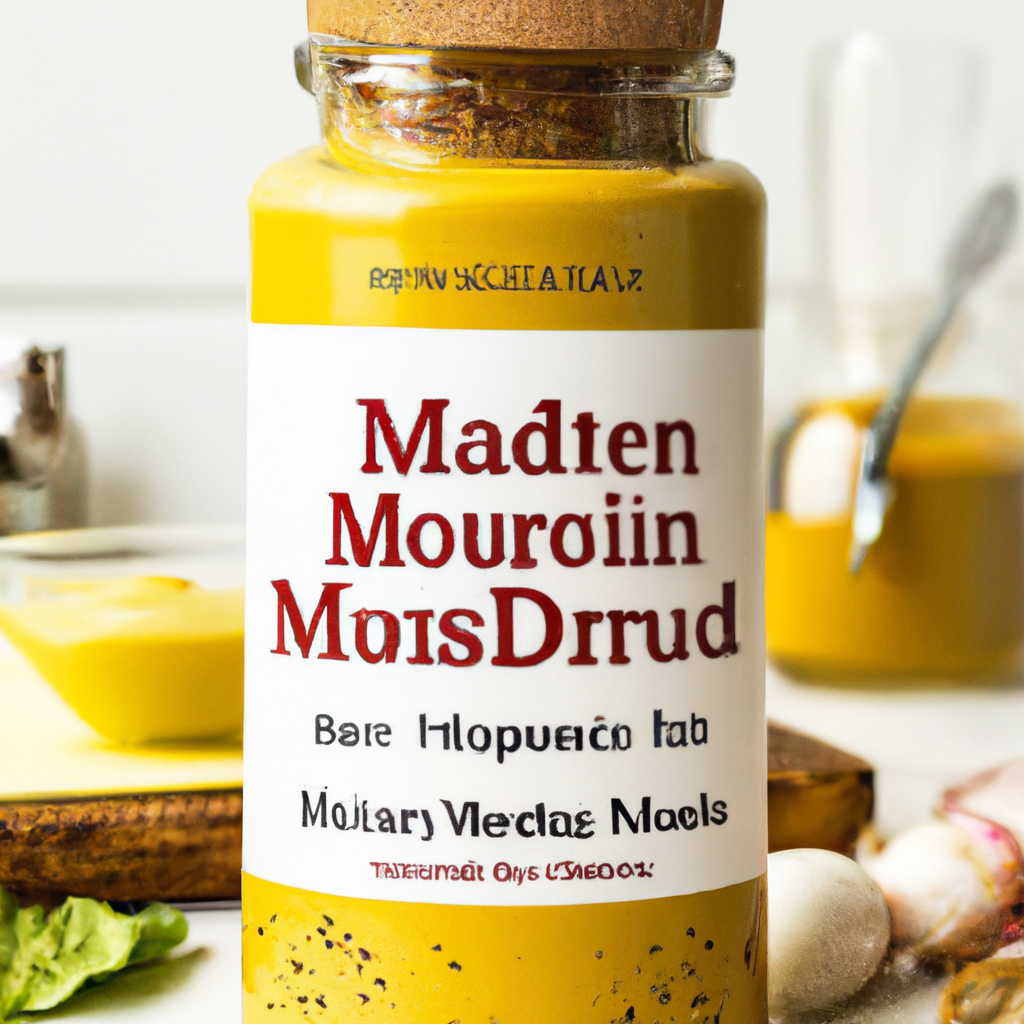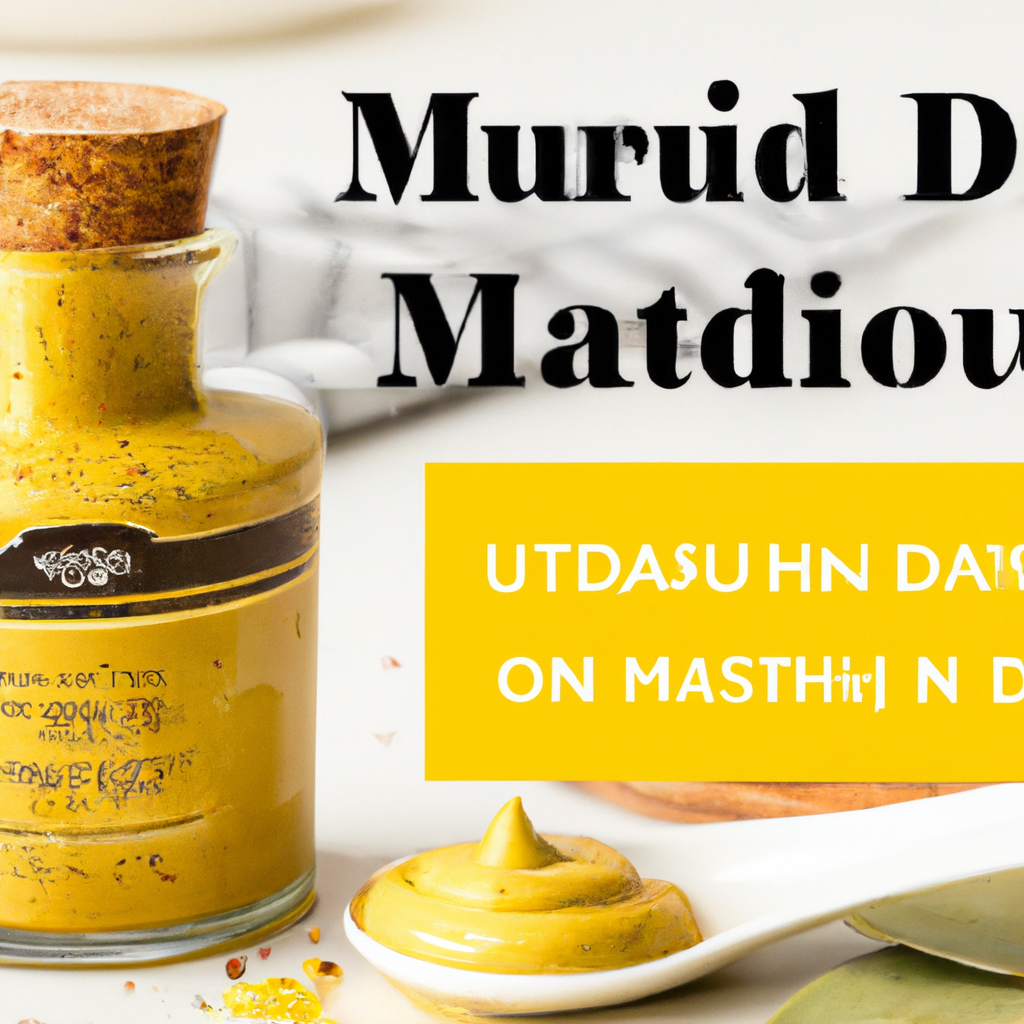Have you ever wondered how to make your own Dijon mustard from scratch? Look no further! In this article, you will discover an easy and foolproof recipe to create the tangy and flavorful condiment in the comfort of your own kitchen. With just a handful of ingredients and a little bit of time, you’ll be able to enjoy the taste of homemade Dijon mustard that will elevate any dish to new heights of deliciousness. Get ready to impress your friends and family with this simple yet impressive culinary feat!
Ingredients
To make your own Dijon mustard, you will need the following ingredients:
- Mustard Seeds
- Vinegar
- Salt
- White Wine (optional)
- Honey (optional)
Equipment
Before you start making your homemade Dijon mustard, gather the necessary equipment:
Measuring Spoons
You will need measuring spoons to accurately measure the ingredients for your mustard.
Mixing Bowl
A mixing bowl is where you will combine and blend the mustard seeds, vinegar, and salt to create the mustard paste.
Whisk
A whisk will help you blend the mustard seeds and other ingredients together, ensuring a smooth and well-mixed texture.
Saucepan
You will need a saucepan to heat and simmer the mustard mixture before transferring it to a storage jar. Ensure the saucepan is large enough to hold the mixture without any spills.
Glass Jar
After preparing your Dijon mustard, you will need a glass jar to store it. The jar should have an airtight seal to maintain freshness.

Step 1: Preparing the Mustard Seeds
Soaking the Mustard Seeds
Before you can start making the mustard paste, you need to soak the mustard seeds. Place the seeds in a bowl and cover them with water. Let them soak overnight, or for at least 8 hours. This process makes the seeds softer and easier to blend.
Draining and Drying the Mustard Seeds
After soaking, drain the water from the mustard seeds using a sieve or colander. Pat them dry with a clean towel or paper towels. This step removes excess moisture, ensuring a better texture when blending.
Step 2: Making the Mustard Paste
Blending the Mustard Seeds
Now that your mustard seeds are ready, transfer them to a mixing bowl. Use a whisk or a blender to grind the seeds. You can choose the consistency of your mustard by blending it for a shorter or longer time. A shorter blend will result in a coarser texture, while a longer blend will yield a smoother mustard.
Adding Vinegar and Salt
Once the mustard seeds are ground to your desired consistency, it’s time to add the vinegar and salt. Measure the vinegar and pour it into the mixing bowl with the ground mustard seeds. Add salt according to your taste preferences. Remember to start with a small amount and adjust gradually as needed.
Mixing until Smooth
Using a whisk or a spoon, mix the mustard seeds, vinegar, and salt together until they are well combined and smooth. The blending process may take a few minutes, so be patient and ensure all ingredients are fully incorporated.

Step 3: Heating and Simmering
Pouring the Mixture into a Saucepan
Transfer the mustard paste from the mixing bowl into a saucepan. Make sure to use a saucepan large enough to accommodate the mixture without any overflow while simmering.
Heating the Mixture
Place the saucepan over medium heat and gently warm the mustard mixture. Stir occasionally to prevent any scorching or sticking to the bottom of the pan. Heating the mixture enhances the flavors and helps to develop the desired consistency.
Simmering to Reduce Liquid
Once the mustard mixture is heated, reduce the heat to low and allow it to simmer. The mustard will thicken as the liquid evaporates. Simmer for about 15-20 minutes, or until you achieve the desired thickness. Remember to stir occasionally to prevent the mixture from sticking.
Cooling the Mixture
After simmering, remove the saucepan from the heat and let the mustard mixture cool completely. Transfer it back to the mixing bowl and let it sit at room temperature until it reaches a cooler temperature. Cooling the mustard allows the flavors to meld together.
Step 4: Adding Optional Ingredients
Adding White Wine
For those who prefer a more complex flavor profile, you can add white wine to your Dijon mustard. Measure the desired amount of white wine and gradually stir it into the cooled mustard mixture. This step will add depth and a touch of acidity to your mustard.
Adding Honey
If you prefer a hint of sweetness in your mustard, consider adding honey. Measure the desired amount of honey and gradually mix it into the cooled mustard mixture. Honey adds a subtle sweetness that complements the tanginess of Dijon mustard.
Step 5: Storing and Aging
Transfer to a Glass Jar
Once your Dijon mustard has cooled and any optional ingredients are added, transfer it to a clean glass jar. Ensure the jar has an airtight seal to maintain freshness and prevent any unwanted flavors or odors from affecting your homemade mustard.
Refrigerating and Aging for Flavor
To allow the flavors to develop, refrigerate your homemade Dijon mustard. It is best to let it age for at least a day before using it. However, the longer you let it sit in the refrigerator, the more the flavors will meld and intensify. Homemade Dijon mustard can be stored in the fridge for several weeks, but its quality is best within the first few weeks.
Tips and Variations
Adjusting Spiciness
If you prefer a spicier mustard, you can experiment with adding crushed red pepper flakes or other spicy ingredients. Start with a small amount, mix it into the Dijon mustard, and taste before adding more. Remember, you can always add more spice, but you cannot take it away once it’s mixed in.
Experimenting with Herbs and Spices
To personalize your Dijon mustard, try adding herbs and spices. Some popular options include garlic, tarragon, thyme, or even smoked paprika. Add a pinch or two to your mustard mixture and adjust the amount according to your taste.
Using Different Vinegars
While white wine vinegar is the traditional choice, you can experiment with different vinegars to create unique flavors. Red wine vinegar, champagne vinegar, or even balsamic vinegar can add a different twist to your homemade Dijon mustard. Just be sure to adjust the other ingredients accordingly to balance the flavors.
FAQs
How long does homemade Dijon mustard last?
When properly stored in an airtight container in the refrigerator, homemade Dijon mustard can last for several weeks, usually up to a month. However, for the best quality and flavor, it is recommended to consume it within the first few weeks.
Can I use yellow or brown mustard seeds instead?
While Dijon mustard is traditionally made with brown or black mustard seeds, you can use yellow mustard seeds as a substitute. Keep in mind that using different types of mustard seeds may slightly alter the flavor and texture of your homemade mustard.
Can I substitute apple cider vinegar for white wine vinegar?
Yes, you can substitute apple cider vinegar for white wine vinegar. Apple cider vinegar adds a slightly sweeter and fruitier flavor to the mustard. Feel free to experiment with different types of vinegar to create unique variations of homemade Dijon mustard.
Conclusion
Making your own Dijon mustard can be a rewarding and flavorful experience. With a few simple steps and readily available ingredients, you can create a delicious condiment that surpasses store-bought varieties. Customize the spiciness and flavor profile to suit your taste preferences, and enjoy the satisfaction of adding a homemade touch to your culinary creations. So roll up your sleeves, gather your ingredients and equipment, and start whisking your way to a jar of homemade Dijon mustard that will enhance your favorite dishes.
